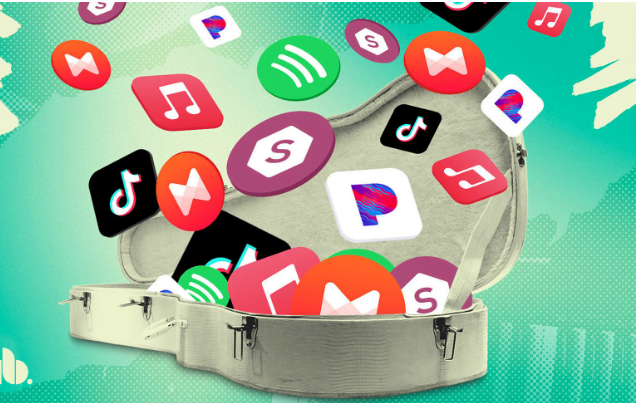Types of Music distribution is divided in many ways. Let’s not know those things.

Let’s do a quick overdue:
WHAT IS MUSIC DISTRIBUTION?
Take a scenario; where you are an artist who wants to independently serve your fanbase or the potential fanbase. However, the problem occurs when you don’t get enough reach because of not being wise when disseminating your creation.
Here’s where music Distribution comes in, it is as old as the Music industry itself. The Music Distribution service helps your music to distribute properly and reach as many people as possible.
A Brief Historical Dive.
Ugh! Another history lesson? Well, these are the important ones
The history of the music distribution industry is as old as the music industry itself. When sheet music was dominant in the market they wanted companies to print the scores and also deliver these to the stores. However, with the advent of the internet and digital platforms, the role of music distribution changed a lot, as every business does!
Physical Distribution.
In the early 2000s era Music Distribution was mostly Physical. It was the era of CDs, vinyl, and cassettes, the distributors had to distribute the music from store to store. They played the role of middleman between the store and the record label.
Digital Distribution.
Whereas the core role is the same, the workflow and business have changed over the changing times. The Cd’s changed to digital media. Now it’s the era of music streaming. The music distributors now work like a bridge between the streaming platforms and the record labels or the artists. If putting it in much simpler words the music distributors upload your songs, as well as current metadata to DSPs like Apple Music, Spotify, TIDAL, Amazon Music etc. This way your song reach will be somewhat guaranteed.
Types of Music Distributions.
The Majors :
The major big labels mostly have their catalogs wide enough to deal with the potent DSPs. they usually don’t need any distribution partners as they have direct connections with the editorial teams of DSPs.
These majors like Warner, and Sony ears a fortune as they have different music distribution services under them as an umbrella business, their direct access doesn’t always need an independent distributor.
The Open Distributors.
These types of music distributors have the most numbers in the industry. They have different services in different plans. When you upload your music they distribute your music to platforms with metadata, they charge a certain percentage of royalty fees, like ForeVision Digital is more accessible to the artists, they pay more attention to their resources and distribute your songs to various platforms.
White label Distributors.
There are many music distributors that have resources but lack technical infrastructure. The lack of breathing is the gap. These lead to white solutions: they do the administrative duties of the distributors, delivering the music as well as metadata to DSPs. While customers have total control over distribution.
Semi Label Distributors.
These music distributors provide artists with the same services as the open distributors however it has a twist. When any artist’s music gets many views they upscale the distribution deals. The consumption data gathered goes to the company’s revenue and the artists get upscaled as partners. They get record licensing agreements along with the PR, brand collabs and many more.
Human writer.
Human writer is a person who creates written content using their creativity, knowledge, and skills. Unlike automated tools or AI, human writers bring personal experiences, emotions, and unique perspectives to their writing. They craft content for various purposes, such as articles, stories, essays, and reports, ensuring originality, coherence, and engagement. Human writers are valued for their ability to understand complex ideas, adapt to different tones, and connect with readers on a deeper level.
